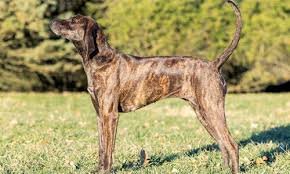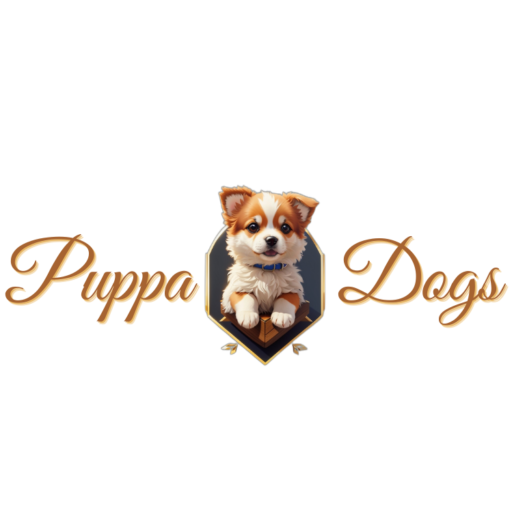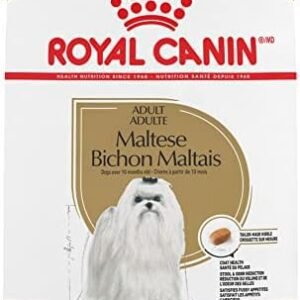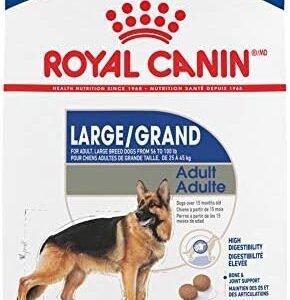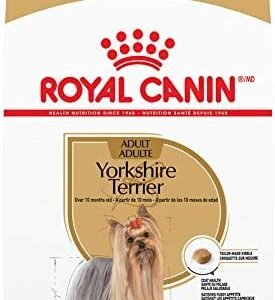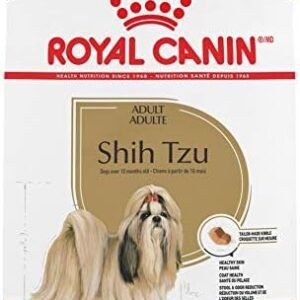Over 80% of dogs get sick if they catch the canine influenza virus. This shows how important it is for pet owners to get their dogs vaccinated. Canine influenza, or dog flu, is a contagious respiratory disease. It’s caused by two viruses: H3N8 and H3N2.
Most dogs in North America don’t have immunity to this virus. So, they can easily get infected. Dogs with the flu may show signs like coughing, fever, and sneezing. In bad cases, they might even get pneumonia.
Even though it’s not usually deadly, the flu can spread fast among dogs. It’s crucial to protect your dog from getting it.
Key Takeaways
- Canine influenza is a highly contagious respiratory disease that can affect up to 80% of exposed dogs.
- Vaccines are available for both known strains of canine influenza: H3N8 and H3N2.
- Dogs at high risk include those that frequent communal activities like dog parks, groomers, and boarding facilities.
- Canine influenza vaccination can help reduce the risk of infection and lessen symptoms in case of illness.
- The cost of the canine influenza vaccine typically ranges from $46 to $60, and pet insurance may cover the costs.
Table of Contents
Understanding Canine Influenza
Canine influenza, or dog flu, is a common respiratory disease in dogs. It’s caused by two types of the canine influenza virus (CIV): H3N8 and H3N2. The H3N8 strain was found in 2004. The H3N2 strain was first seen in the U.S. in 2015, in the Chicago area.
What is Canine Influenza?
Canine influenza, or dog flu, is a highly contagious disease. It can make dogs cough, sneeze, have a fever, and lose their appetite. The virus spreads easily from dog to dog through saliva or respiratory secretions.
Causes and Symptoms
This disease doesn’t spread to humans, but it can be serious for dogs. If not treated, it can lead to pneumonia and other severe health issues. The symptoms of canine influenza include:
- Coughing
- Sneezing
- Fever
- Loss of appetite
About 80% of dogs that get CIV will show symptoms. The death rate is less than 10%.
“Dogs infected with H3N2 canine influenza should be isolated for at least 21 days.”
If a dog shows signs of canine influenza, seeing a vet is crucial. They can give the right care and treatment. Testing is key to figure out if a dog has canine influenza.
Importance of Vaccinating Your Dog
The dog flu vaccine and other canine influenza vaccines are key to keeping your furry friend healthy. They protect against canine influenza, a contagious respiratory illness that can be very serious for dogs.
The importance of the canine influenza vaccine is clear. It helps reduce the severity of symptoms and how much the virus spreads in infected dogs. This lowers the risk of the disease spreading, especially in places where dogs meet often, like daycare centers, boarding places, dog parks, and events.
- Vaccinating dogs that meet other dogs often is key to keeping them and other dogs safe.
- The vaccine cuts down on the effects of canine influenza, making it less likely to cause serious problems or lead to expensive vet bills.
- By getting your dog vaccinated, you’re helping keep the pet community healthy and stopping the spread of this respiratory disease.
“Vaccination is the most effective way to protect your dog against the potentially devastating effects of canine influenza.”
Keeping your dog’s influenza vaccine up-to-date is a smart move to protect their health and happiness. Talk to your vet to see if the dog flu vaccine is right for your pet, considering their lifestyle and risks.
Influenza Vaccine for dogs
The canine influenza vaccine is key to keeping your dog safe from flu. It’s also known as the dog flu vaccine. This vaccine is essential for your pet’s health and safety.
This vaccine is a killed (inactivated) virus vaccine. It has viruses that are not active. This lets your dog’s immune system make antibodies without getting sick.
The main goal of the canine influenza vaccine is to stop canine influenza. This is a respiratory disease caused by H3N8 and H3N2 viruses. Giving your dog this vaccine helps protect their health and lowers the risk of getting this serious illness.
The vaccine is given as an injection. This makes sure the antibodies get to your dog effectively. All canine influenza vaccines in the U.S. are FDA-approved. This means they are safe and of high quality.
“Protecting your canine companion against the threat of influenza is crucial, and the canine influenza vaccine is a reliable and FDA-approved solution to keep your furry friend healthy and safe.”
Canine Influenza Vaccines Available
We want to keep our dogs safe from diseases like canine influenza. Luckily, there are two kinds of canine influenza vaccines in the US: bivalent and monovalent.
Bivalent Canine Influenza Vaccine
The bivalent canine influenza vaccine protects against H3N8 and H3N2 strains. It’s a good choice because it covers the most common types of canine flu in the US. Vets often suggest it for its wide protection.
Monovalent Canine Influenza Vaccine
The monovalent canine influenza vaccine guards against just one strain, either H3N8 or H3N2. It might be okay for some dogs, but the bivalent vaccine is usually better. It protects against more types of canine influenza.
All canine influenza vaccines in the US are FDA-approved. This means they’re safe and work well. As dog owners, we can feel secure knowing these vaccines help keep our pets safe from this respiratory illness.
Vaccination Schedule for influenza vaccine for dogs
Protecting your dog from the serious canine influenza virus is key. The American Animal Hospital Association (AAHA) has set a vaccination schedule. This schedule is important for your dog’s health.
- For puppies under 16 weeks of age: Two doses administered 2-4 weeks apart, followed by a single dose one year later.
- For dogs over 16 weeks of age with no prior history of the influenza vaccine: Two doses 2-4 weeks apart, then a single dose annually.
- For dogs over 16 weeks of age with a prior history of the influenza vaccine: A single dose annually.
This schedule helps dogs build antibodies against the canine influenza virus. This is key for their health and well-being.
The canine influenza vaccine is a “non-core” vaccine. It’s not as essential as vaccines for parvovirus, distemper, and rabies. Yet, in places where the virus is common, like dog parks or grooming salons, it’s a must. It keeps your dog safe.
“Protecting your dog’s health by following the proper canine influenza vaccine schedule is a crucial step in ensuring their well-being.”
Determining If Your Dog Needs the Vaccine
Not every dog needs the canine influenza vaccine. It’s a non-core vaccine, given based on a dog’s lifestyle and risk of getting the flu. Vets often recommend it for dogs that go to daycare, stay in boarding facilities, or visit dog parks often. These places increase the chance of catching the virus.
Dogs that travel a lot or go to dog shows might also need the vaccine. Dogs with ongoing breathing or heart issues, or those with flat faces, are more likely to get very sick. They might need the vaccine for extra protection.
Risk Factors for Canine Influenza
- Attendance at daycare, boarding, or group training
- Frequent visits to dog parks
- Extensive travel
- Participation in dog shows or events
- Chronic respiratory or heart conditions
- Brachycephalic (flat-faced) breed
- Living in multi-dog kennels
Looking at your dog’s lifestyle and risk factors helps decide if the vaccine is right. It can protect your dog’s health and prevent the spread of the virus.
Administering the Canine Influenza Vaccine
Getting your dog vaccinated against the flu is easy and can be done at most vet clinics. The vaccine is given as an injection, usually in the dog’s neck. Dogs need two doses, 2-4 weeks apart, for the first series. Then, they need an annual booster shot.
Your vet will tell you when to get your dog vaccinated. It’s key to follow their advice to keep your dog safe from the flu.
How you give the vaccine can affect how well it works. Researchers have looked into different ways to give it, like through muscle or skin. They also check how well the vaccine stays safe during transport.
- Studies look at how to give vaccines to dogs in labs.
- They’re testing microneedles for giving vaccines through the skin, which could be used for dogs.
- They’re finding out how dogs react to human flu viruses, showing why vaccines are important for dogs.
By listening to your vet and making sure your dog gets all their shots, you can keep them healthy. This helps stop the flu from spreading.
“Vaccinated dogs can still contract and develop canine influenza, but with reduced severity and duration of illness, as well as decreased shedding of the virus.”
Potential Side Effects and Precautions
The canine influenza vaccine is safe and effective for pets. But, pet owners should know about possible side effects. Some dogs may react mildly to the vaccine. Knowing about these effects helps owners watch their pets closely and act fast if needed.
Common Side Effects
Common side effects of the canine influenza vaccine are:
- Pain or swelling at the injection site
- Mild fever
- Decreased energy or appetite
- Mild vomiting
These effects are usually mild and go away in a few days. Owners should keep an eye on their dogs after the vaccine. If symptoms don’t go away or get worse, call the vet.
Serious Side Effects
Some dogs may have serious side effects from the vaccine, but this is rare. These can include:
- Persistent vomiting or diarrhea
- Prolonged swelling or pain at the injection site
- Hives or other allergic reactions
- Collapse or other signs of anaphylaxis
- Swollen face or muzzle
If you see these serious side effects, call your vet right away. Quick action is key for these rare but serious reactions to the canine influenza vaccine.
Knowing about the side effects of the canine influenza vaccine and the risks of dog flu vaccine helps pet owners make good choices. They can work with their vets to keep their pets safe and healthy.
Cost of Canine Influenza Vaccine
Keeping your dog safe from the dog flu is crucial. But, the cost of the vaccine might worry many pet owners. The average price for the vaccine is $45.08 to $51.87 per dose, not counting the visit fee. Yet, there are ways to cut down the cost and keep your dog safe.
Ways to Save on Vaccine Cost
- Enroll in a preventative wellness plan that covers routine vaccinations, including the canine influenza vaccine.
- Look for low-cost vaccine clinics in your area, often hosted by local animal shelters or veterinary organizations, which can provide the vaccine at a discounted rate.
- Ask your veterinarian about purchasing a wellness plan that includes all necessary vaccines for your dog, potentially offering a more affordable package deal.
- Request a technician-only visit for vaccine boosters if your dog is healthy, which can be less expensive than a full veterinary appointment.
By looking into these options, pet owners can get the canine influenza vaccine at a better price. This helps keep their furry friends safe from a serious respiratory illness.
“Investing in the canine influenza vaccine is a small price to pay for the peace of mind and protection it provides for our beloved dogs.”
Prevention and Treatment of Canine Influenza
Pet owners can prevent and manage canine influenza by taking steps beyond just vaccination. This disease is a highly contagious respiratory issue in dogs.
Sanitation and Isolation Measures
Keeping things clean and separating sick dogs are key to stopping the spread of the how to prevent canine influenza virus. Here’s what to do:
- Disinfect common areas, bowls, leashes, and crates with a bleach solution
- Wash hands often when handling different dogs
- Keep sick dogs isolated for up to 21 days after they get better
These steps help stop the virus from spreading to other dogs and places.
Treating Treating dog flu
If a dog might have canine influenza, they need to see a vet. Treatment might include:
- Rest to help the dog’s immune system fight the virus
- Fluids to keep the dog from getting dehydrated
- Antibiotics for any secondary infections
There’s no cure for canine influenza, but these treatments can ease symptoms and help the dog recover.
By keeping things clean and isolating sick dogs, owners can reduce the spread of canine influenza. It’s also key to get vet care for dogs with the disease.
Comparison with Other Respiratory Diseases
Canine influenza, also known as the “dog flu,” can be confused with other respiratory illnesses, like kennel cough. Both can make dogs cough, but they are not the same. Pet owners need to know the differences.
Dogs with canine influenza get much sicker than those with kennel cough. Canine influenza can cause serious symptoms like nasal discharge and pneumonia. Kennel cough is usually milder and affects the upper respiratory tract.
| Condition | Severity of Symptoms | Key Differences |
|---|---|---|
| Canine Influenza | More severe | Dogs may develop nasal discharge, pneumonia, and be more severely ill |
| Kennel Cough | Less severe | Typically affects the upper respiratory tract and causes a less severe cough |
Knowing the differences between canine influenza vs. kennel cough helps pet owners spot the flu in their dogs. This can lead to quicker diagnosis and better treatment. It can also help dogs recover faster.
Canine influenza can also be mistaken for other respiratory illnesses, like canine respiratory coronavirus (CRCoV) and canine parainfluenza virus (CPIV). These viruses have similar symptoms but need different treatments.
“At least nine infectious viruses and bacteria commonly affect dogs, increasing the severity of illness when multiple bugs are present simultaneously.”
Understanding the differences between dog flu and other respiratory illnesses helps pet owners make better health decisions. It ensures their dogs get the right medical care.
Protecting Your Dog’s Health
Keeping dogs healthy and stopping the spread of illnesses like canine influenza is key for pet owners. Vaccines are crucial for dogs at high risk. They lessen the severity of illness and help stop outbreaks. Good sanitation and quick vet care for sick dogs are also important steps.
The canine influenza virus can spread for up to 28 days, even in dogs that don’t show symptoms. Vaccines are key since immunity takes a week to start after the booster shot. Right now, there’s a shortage of the vaccine, but it will be back soon.
To lower the risk of spreading the virus, vet clinics have new rules. They ask coughing dogs to stay in the car to prevent spreading the infection. Owners should call their vet to get on the waitlist for the vaccine. The vaccine needs two doses, two to four weeks apart, with an annual booster.
Vaccinated dogs can still get canine influenza, but the vaccine helps make the illness less severe and shorter. Mild side effects like tiredness or vomiting might happen after the vaccine. Rarely, dogs may have a severe allergic reaction. Remember, this vaccine is different from the Bordatella vaccine, which has its own purpose.
By vaccinating and keeping things clean, pet owners can help keep their dogs healthy. This helps stop the spread of this contagious disease.
Mechanism of Action of influenza vaccine
The canine influenza vaccine uses the dog’s immune system to fight off the virus. It contains killed H3N8 and H3N2 influenza viruses. When given, these viruses make the dog’s immune system create antibodies without making the dog sick.
This method is called antigenic stimulation. The killed viruses show the immune system viral proteins. This makes the immune system produce antibodies that can fight the real virus if the dog meets it later. This helps protect the dog from getting infected or makes the symptoms less severe.
The vaccine primes the immune system to quickly and effectively fight the influenza virus. By showing the immune cells the viral antigens in a safe way, the vaccine helps the body remember the specific strains of influenza. This makes it easier for the body to fight off the virus.
Vaccination is key to keeping your dog healthy and safe. Knowing how the canine influenza vaccine works helps pet owners make smart choices. This way, they can protect their dogs from the serious effects of this respiratory disease.
Conclusion
Keeping dogs safe from canine influenza is key to their health. The bivalent canine influenza vaccine protects against H3N8 and H3N2 strains. It’s a must for dogs at high risk. Following the vaccination schedule and other precautions helps stop the spread of this disease.
It’s vital to stay alert and take action to protect our dogs. The H3N8 and H3N2 strains are still a threat. Knowing about the vaccines, their effects, and how to give them can keep our pets safe and healthy.
As pet owners, we must take steps to prevent canine influenza. Vaccination is a big part of giving our dogs the care they need. By doing this, we help our dogs stay safe from this serious illness and live their best lives.



